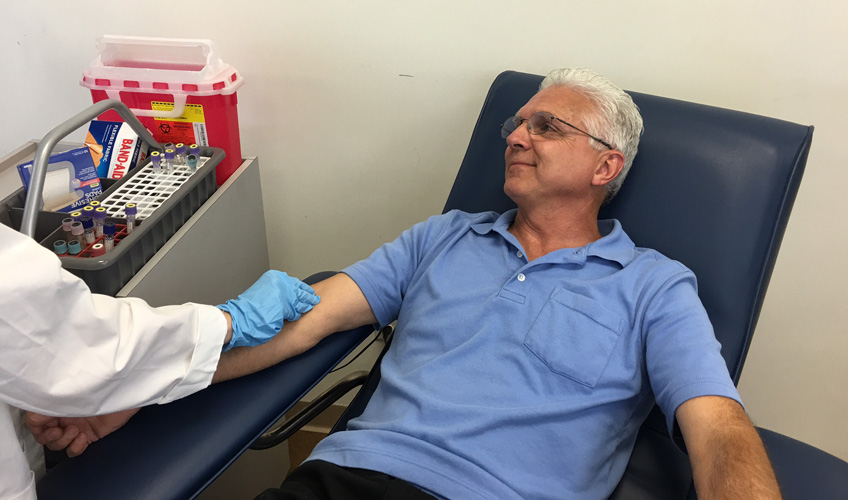Northeast Medical Institute - New Haven Campus Phlebotomy Course & Cna Class - An Overview
Northeast Medical Institute - New Haven Campus Phlebotomy Course & Cna Class - An Overview
Blog Article
More About Northeast Medical Institute - New Haven Campus Phlebotomy Course & Cna Class
Table of ContentsThe Main Principles Of Northeast Medical Institute - New Haven Campus Phlebotomy Course & Cna Class The Ultimate Guide To Northeast Medical Institute - New Haven Campus Phlebotomy Course & Cna ClassThe Ultimate Guide To Northeast Medical Institute - New Haven Campus Phlebotomy Course & Cna ClassNortheast Medical Institute - New Haven Campus Phlebotomy Course & Cna Class for BeginnersThe 7-Second Trick For Northeast Medical Institute - New Haven Campus Phlebotomy Course & Cna ClassThe Best Guide To Northeast Medical Institute - New Haven Campus Phlebotomy Course & Cna Class
The usage of such tools should be accompanied by other infection prevention and control techniques, and training in their usage. Not all safety and security devices are suitable to phlebotomy. Prior to choosing a safety-engineered tool, individuals must completely check out readily available tools to identify their proper use, compatibility with existing phlebotomy practices, and efficacy in shielding team and individuals (12, 33).For setups with low resources, cost is a driving variable in procurement of safety-engineered devices - CNA Courses. Where safety-engineered tools are not readily available, skilled use a needle and syringe serves. Unintentional exposure and details info about an event should be tape-recorded in a register. Support services ought to be promoted for those who undertake unintended direct exposure.
In the blood-sampling room for an outpatient department or clinic, supply a comfy reclining couch with an arm remainder.
Top Guidelines Of Northeast Medical Institute - New Haven Campus Phlebotomy Course & Cna Class
Make sure that the indications for blood sampling are clearly defined, either in a created procedure or in recorded guidelines (e.g. in a research laboratory form). Gather all the equipment needed for the treatment and place it within secure and simple reach on a tray or cart, guaranteeing that all the things are clearly visible.
Where the individual is grown-up and conscious, comply with the steps laid out below. Introduce on your own to the client, and ask the individual to specify their full name. Check that the lab form matches the individual's identification (i.e. match the individual's details with the research laboratory form, to ensure precise recognition). Ask whether the license has allergic reactions, anxieties or has ever passed out throughout previous shots or blood draws.
Make the client comfortable in a supine setting (when possible). Location a clean paper or towel under the patient's arm. Talk about the test to be done (see Annex F) and get spoken authorization. The patient has a right to decline an examination at any time prior to the blood tasting, so it is essential to make sure that the individual has understood the procedure.
More About Northeast Medical Institute - New Haven Campus Phlebotomy Course & Cna Class
Extend the client's arm and check the antecubital fossa or lower arm. Locate a capillary of a good size that shows up, straight and clear. The layout in Area 2.3, reveals common placements of the vessels, but numerous variations are possible. The mean cubital blood vessel exists between muscle mass and is generally the most simple to puncture.
DO NOT insert the needle where veins are drawing away, due to the fact that this increases the possibility of a haematoma. The capillary ought to show up without using the tourniquet. Situating the blood vessel will certainly assist in determining the correct size of needle. Apply index the tourniquet concerning 45 finger sizes above the venepuncture site and re-examine the capillary.
Haemolysis, contamination and presence of intravenous liquid and medication can all modify the outcomes (39. Nursing personnel and physicians might access main venous lines for samplings complying with methods. Samplings from central lines lug a risk of contamination or wrong lab test results. It is acceptable, yet not ideal, to injure specimens when initial introducing an in-dwelling venous tool, prior to linking the cannula to the intravenous liquids.
An Unbiased View of Northeast Medical Institute - New Haven Campus Phlebotomy Course & Cna Class
Failure to enable adequate contact time increases the risk of contamination. DO NOT touch the cleaned up website; in specific, DO NOT put a finger over the capillary to assist the shaft of the exposed needle.
Ask the person to create a clenched fist so the blood vessels are extra famous. Get in the capillary quickly at a 30 degree angle or less, and remain to present the needle along the blood vessel at the most convenient angle of access - Phlebotomy Courses. Once adequate blood has actually been collected, launch the tourniquet prior to taking out the needle
A Biased View of Northeast Medical Institute - New Haven Campus Phlebotomy Course & Cna Class
Take out the needle gently and use gentle pressure to the site with a clean gauze or completely dry cotton-wool ball. Ask the person to hold the gauze or cotton woollen in position, with the arm extended and elevated. Ask the client NOT to flex the arm, since doing so triggers a haematoma.

Excitement About Northeast Medical Institute - New Haven Campus Phlebotomy Course & Cna Class
Do not press the syringe plunger because extra stress enhances the danger of haemolysis. Where possible, keep televisions in a rack and relocate the rack towards you. Inject downwards right into the appropriate coloured stopper. DO NOT get rid of the stopper because it will certainly launch the vacuum. If the sample tube does not have a rubber stopper, inject extremely gradually right into television as lessening the stress and rate used to transfer the sampling reduces the risk of haemolysis.

Report this page